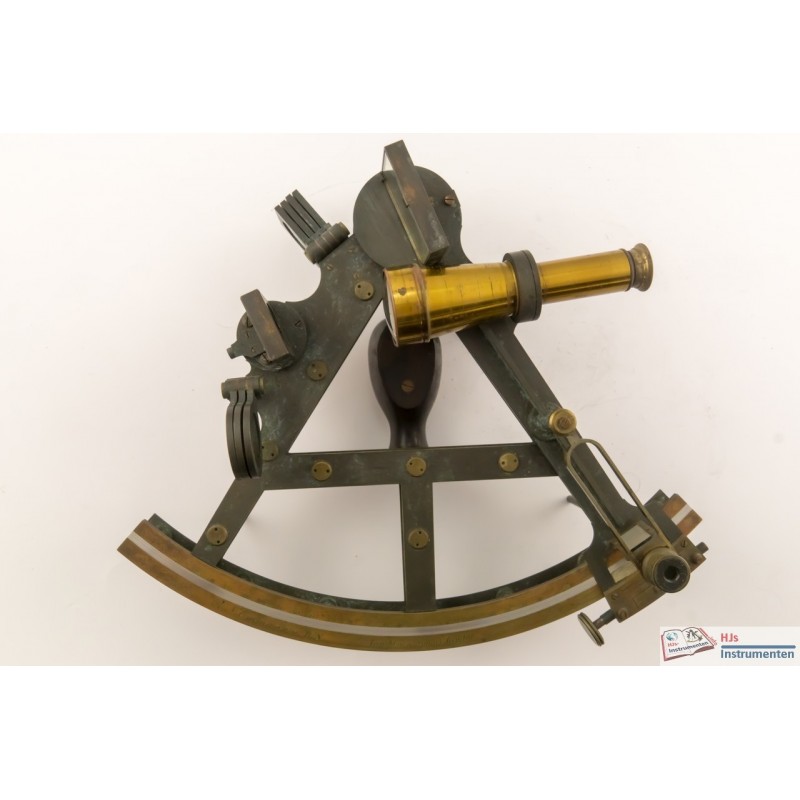





















Troughton and Simms double frame pillar quintant with platinum scale
Product details: Troughton and Simms double frame pillar quintant | Throughton & Simms | Quintant | Navigation | Material: Brass
This sextant is close to the 'holy grail' of sextants. Apart from an original sextant by Hadley or Jesse Ramsden this is one of the most sought after models of sextant. The pillar sextant was patented by Edward Troughton in 1788 and consists of two frames connected by small brass pillars. They were expensive to make but very rigid. This one is the top of the line model as it has the scale engraved on platinum rather than the (cheaper) silver. It came with the full set of telescopes and sight tubes but is missing some small accesoires. The adjustment key is still there though.
What makes this sextant more special is that it is marked by not a single owner but by a father and son. The father, Robert Nelson Ommanney has his name engraved on the scale and is most probably the original owner. He entered the Royal Navy in 1868 as cadet and became midshipman in 1869. He ended his active career as Vice Admiral in 1915 after which he became an Admiral while on the retired list in 1917. During his career he mainly served in battleships but early on was employed on at least one vessel employed surveying (HMS Espiegle) from 1881 to 1885.
The sextant itself bears the serial 2552 which, based on similar sextants by Troughton and Simms dates from the last quarter of the 19th century. Based on the career of Robert Nelson Ommanney this would place it probably somewhere between him entering the navy or becoming a midshipman around 1869 and him becoming a lieutenant in 1878. What makes this interesting is the certificate which is dated 1912, around his promotion to Vice Admiral, a function in which a sextant is in no way a requirement. However, in 1913, his son, Patrick Gream Nelson Ommanney also became a midshipman in the Royal Navy. The box has a brass plaque inscribed 'PGN Ommanney' clearly referring to this son (there was another, older brother in the Navy as well).
The history of Patrick Gream Nelson Ommanney does not seem as distinguished as that of his father. After entering the Royal Navy he went to the Royal Naval Air Service in 1915. When the RAF was formed in 1918 he was transferred from the Royal Navy to the Royal Air Force on his own request. In 1919 he resigned his commission and between that date and 1940 the only available information is that he got married and divorced as well as got a patent for a chemical instrument. His service records show him on active (emergency) duty in 1940 which he ended as a Comander in 1948.
It seems unlikely that Patrick Gream Nelson used his sextant often which would explain the pristine condition the mirrors are in.
More information / other collections:
Data sheet